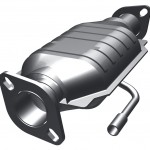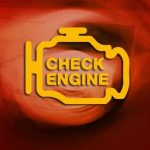On-board diagnostics (OBD) testing has revolutionized the automotive industry by providing a comprehensive and efficient way to monitor and identify potential issues within a vehicle’s systems. From engine performance to emissions control, OBD testing plays a crucial role in ensuring the reliability and safety of modern vehicles.
In this comprehensive guide, we will explore the intricacies of OBD testing, its benefits for both car owners and technicians, as well as provide valuable insights into how to unlock the full potential of this innovative diagnostic technology. Whether you are an avid car enthusiast or a professional mechanic, join us on this journey towards unlocking efficiency and reliability through on-board diagnostics testing.
Understanding On-Board Diagnostics: A Brief Overview
On-Board Diagnostics (OBD) is a system installed in vehicles to monitor their performance and identify potential issues. This technology has become an essential component of modern vehicles, allowing both drivers and mechanics to quickly diagnose problems and ensure optimal functioning.
The OBD system uses various sensors throughout the vehicle to collect data on crucial components such as the engine, transmission, exhaust system, and fuel delivery. This information is then analyzed by the onboard computer, which generates diagnostic trouble codes (DTCs) when it detects abnormalities or malfunctions.
By connecting a diagnostic tool to the vehicle’s OBD port, mechanics can access these DTCs and gain valuable insights into what might be causing any performance issues. This allows for faster and more accurate diagnosis compared to traditional manual inspection methods.
Overall, understanding how OBD works empowers drivers with knowledge about their vehicle’s condition while enabling mechanics to efficiently address any problems that may arise. By regularly performing on-board diagnostics testing, individuals can unlock enhanced efficiency and reliability in their vehicles while ensuring optimal safety on the road.
The Importance of OBD Testing for Vehicle Reliability
1. Identification of Issues Before They Become Major Problems
Regular OBD testing allows for the early detection of potential issues in a vehicle’s performance before they escalate into major problems. By monitoring and analyzing various parameters such as engine temperature, fuel efficiency, and emission levels, OBD systems can provide valuable insights into the overall health of a vehicle. This proactive approach helps prevent unexpected breakdowns or costly repairs down the line.
2. Enhanced Safety on the Road
OBD testing plays a crucial role in ensuring road safety by alerting drivers to any malfunctions or errors in vital components like brakes, steering systems, or airbags. With real-time diagnostic capabilities, OBD systems can quickly identify dangerous situations and notify drivers through warning lights or error codes. Addressing these issues promptly reduces the risk of accidents caused by faulty equipment and enhances overall driving safety.
3. Improved Fuel Efficiency and Reduced Emissions
Efficient combustion is essential for both optimal fuel consumption and reduced emissions. Through continuous monitoring of key engine parameters like oxygen levels in exhaust gases or fuel injection timing, OBD systems help maintain proper fuel-air ratios within an acceptable range, maximizing fuel efficiency while minimizing harmful pollutant releases into the environment.
When it comes to maintaining vehicle reliability and ensuring peak performance on the road, incorporating OBD testing as part of routine maintenance is vital. By identifying potential issues early on, enhancing safety measures, improving fuel efficiency, and reducing harmful emissions levels, OBD testing helps keep vehicles running smoothly while promoting driver confidence on every journey.
Maximizing Efficiency with OBD: Tips and Tricks
Regularly Check for Diagnostic Trouble Codes (DTCs)
To ensure maximum efficiency, it is crucial to regularly check your vehicle for any diagnostic trouble codes (DTCs). These codes are generated by the on-board diagnostics system and indicate potential issues that may be affecting your vehicle’s performance. By promptly addressing these problems, you can prevent further damage and improve fuel efficiency.
Use Real-time Data Monitoring
Taking advantage of real-time data monitoring through an OBD scanner can help you optimize your vehicle’s efficiency. By monitoring parameters such as engine load, coolant temperature, and oxygen sensor readings, you can identify any abnormalities or inefficiencies that need attention. Adjusting driving habits or performing necessary maintenance based on this data can greatly enhance fuel economy and overall performance.
Maintain Proper Vehicle Maintenance
Properly maintaining your vehicle is key to maximizing efficiency using OBD technology. Regularly servicing the engine, replacing air filters, checking tire pressure, and ensuring proper oil levels are all essential steps in optimizing fuel economy. By adhering to recommended maintenance schedules provided by manufacturers and utilizing the OBD system for timely interventions when needed, you can keep your vehicle running at its most efficient level possible.
In conclusion, staying proactive in diagnosing potential issues through regular DTC checks while utilizing real-time data monitoring and adhering to proper maintenance practices will enable you to unlock maximum efficiency using On-Board Diagnostics testing. With these tips and tricks incorporated into your routine, not only will you save money on fuel costs but also extend the lifespan of your vehicle while contributing to a more sustainable environment.
Common OBD Testing Procedures and Protocols
OBD Testing Procedures
There are several common OBD testing procedures that technicians use to diagnose vehicle issues. These protocols involve connecting a diagnostic tool, such as a scan tool or code reader, to the vehicle’s OBD port. Here are some of the key steps involved in OBD testing:
- DTC Retrieval: The first step in OBD testing is retrieving Diagnostic Trouble Codes (DTCs) from the vehicle’s onboard computer system. This involves scanning the system for any stored codes that indicate potential problems with various components or systems.
- Live Data Monitoring: After retrieving DTCs, technicians often perform live data monitoring using their diagnostic tools. This allows them to view real-time information from different sensors and modules within the vehicle, helping identify abnormal readings and pinpointing potential issues.
- Component Activation Tests: Another important aspect of OBD testing is conducting component activation tests. Technicians can activate specific components through their diagnostic tools to check if they’re functioning properly or not. For example, this may include activating fuel injectors or commanding certain valves to open and close.
Communication Protocols
To ensure effective communication between vehicles and diagnostic tools, various protocols have been established in the automotive industry:
- OBD-I: The earliest generation of on-board diagnostics used in vehicles manufactured before 1996 utilized a range of proprietary communication protocols by different manufacturers.
- OBD-II: Introduced in 1996, OBD-II standardized communications across all vehicles sold in North America equipped with gasoline engines manufactured after this date.
- Protocol Types: There are five main protocol types used within ODB-II: SAE J1850 PWM / VPW (used by Ford), ISO9141-2 (mostly used by European/Asian vehicles), ISO14230 KWP2000 Fast / Slow Initiation (used internationally), CAN-BUS ISO15765 / SAE-J2284 (used since 2008, and the primary protocol for most new vehicles).
- Diagnostic Connector: OBD-II standardized the diagnostic connector to a 16-pin configuration that can be located under the dashboard or in other accessible locations.
By following these testing procedures and utilizing the appropriate communication protocols, technicians can effectively diagnose vehicle issues using on-board diagnostics.
Troubleshooting Guide: Interpreting OBD Codes
Interpreting OBD Codes
- Understanding the Basics When it comes to troubleshooting your vehicle, interpreting On-Board Diagnostics (OBD) codes is an essential skill. These codes act as a language that tells you what’s wrong with your car and helps you pinpoint the exact issue.
- Decoding OBD Codes To decipher these codes, start by connecting an OBD scanner to your vehicle’s OBD port. The scanner will then communicate with the onboard computer and retrieve any stored trouble codes. Each code consists of a letter followed by four numbers – for example, P0420 or C1234. The letter indicates which system in your vehicle has detected a problem, such as ‘P’ for powertrain or ‘C’ for chassis.
- Troubleshooting Process Once you have retrieved the trouble code(s), use a reliable online resource or consult your vehicle’s manual to understand what each specific code means. This information can guide you towards diagnosing and fixing the underlying issue responsible for triggering the code in question.
Advanced OBD Testing Techniques: Going Beyond the Basics
Advanced OBD Testing Techniques
- Data logging for in-depth analysis: One advanced technique to enhance OBD testing is data logging, which involves recording and analyzing real-time vehicle data during operation. By capturing a wide range of parameters such as engine speed, coolant temperature, oxygen sensor readings, and fuel trims, technicians can gain valuable insights into the performance and efficiency of a vehicle’s systems. This information can help diagnose issues that may not be evident during basic testing.
- Performing dynamic tests: Dynamic testing goes beyond static scanning by evaluating the vehicle in motion. It involves driving the vehicle under various load conditions while simultaneously monitoring important metrics like throttle response, acceleration patterns, transmission shifts, and emissions levels. These tests provide a more comprehensive view of how all components work together and can uncover problems that are not easy to detect through static testing alone.
- Using specialized equipment: In addition to traditional scan tools, utilizing specialized equipment designed specifically for advanced OBD testing can greatly improve diagnostics accuracy. For example:
- Oscilloscopes enable technicians to monitor electrical signals within different circuits to identify irregularities.
- Exhaust gas analyzers measure pollutant levels emitted by the exhaust system for compliance with emission standards.
- Fuel pressure gauges help determine if there are any issues with fuel delivery systems that could affect overall performance.
Advanced OBD testing techniques like these allow technicians to delve deeper into a vehicle’s diagnostics capabilities in order to unlock improvements in efficiency and reliability beyond what basic scanning provides.






